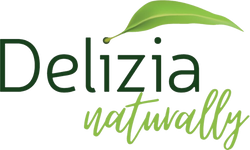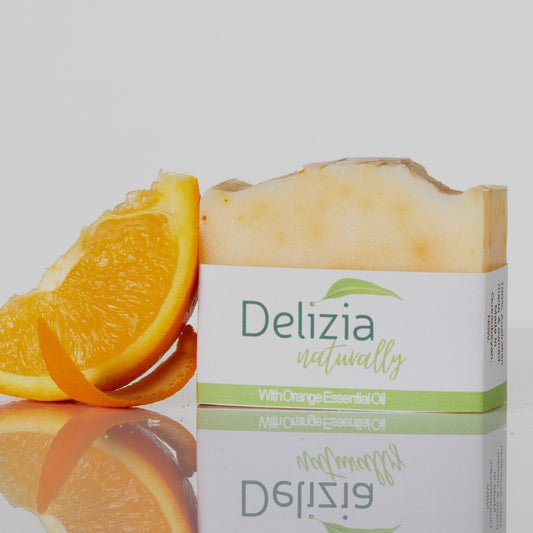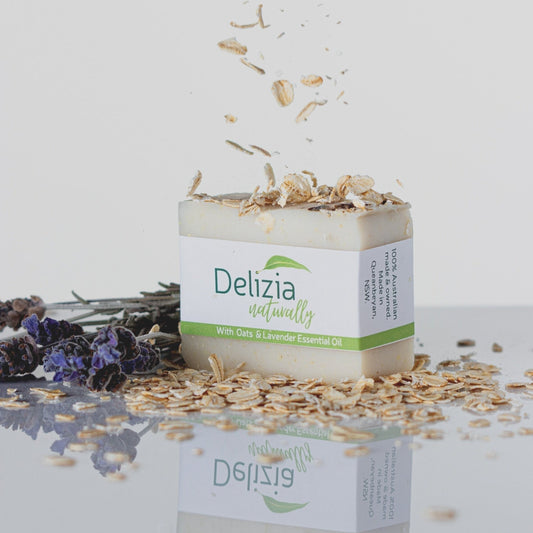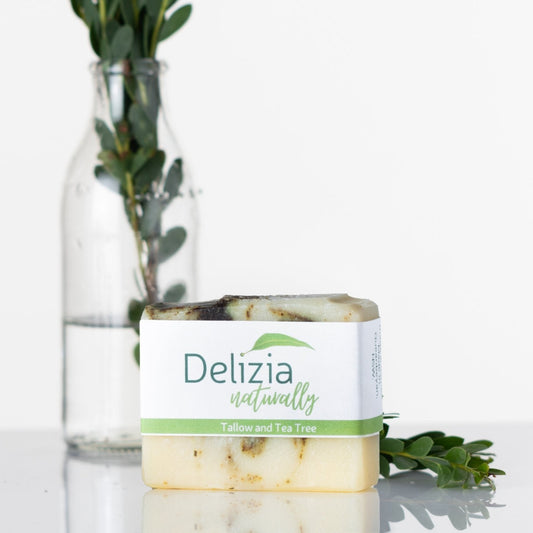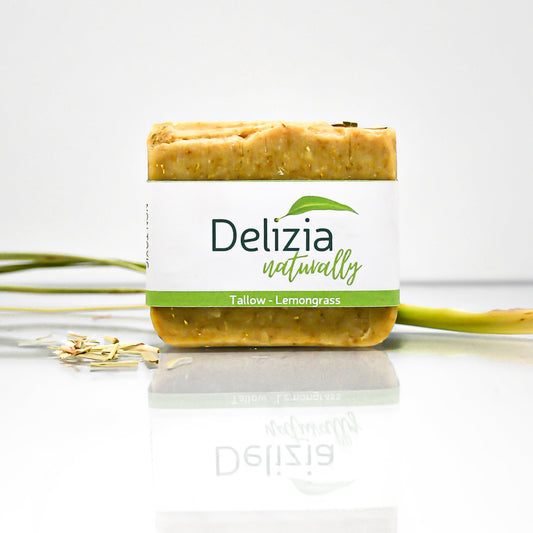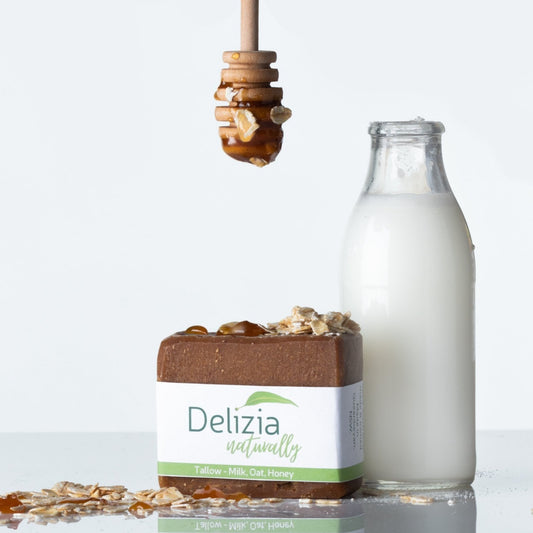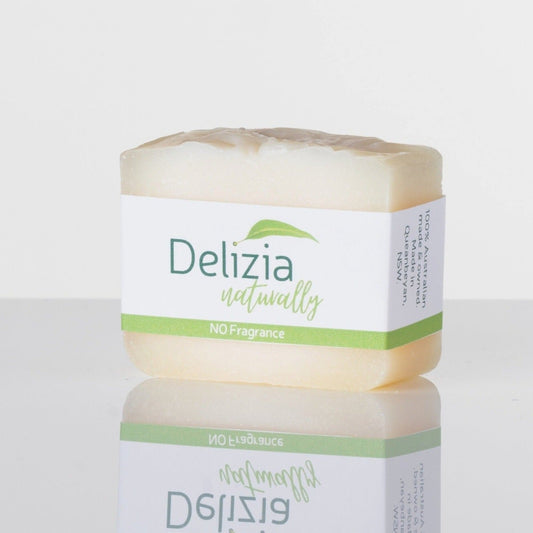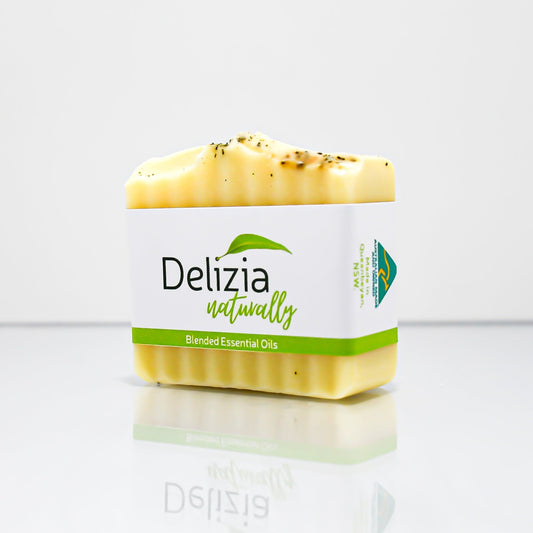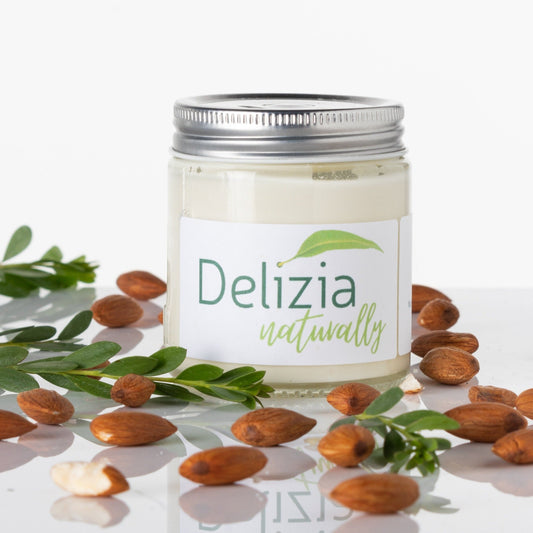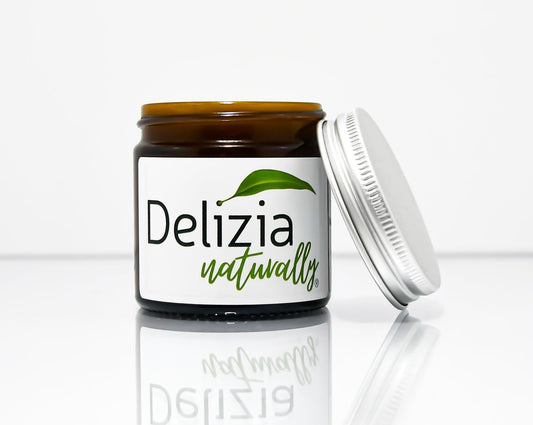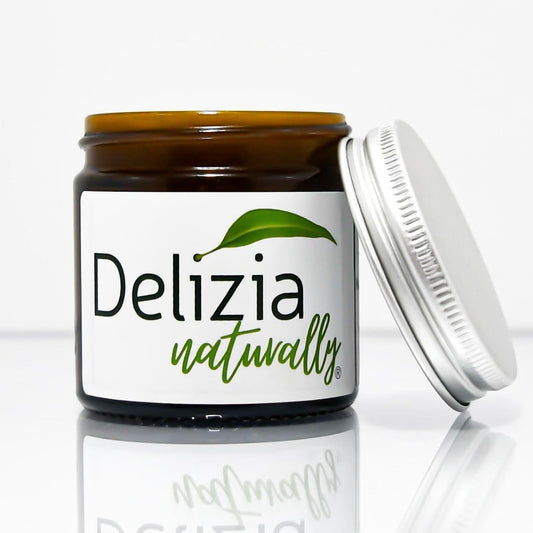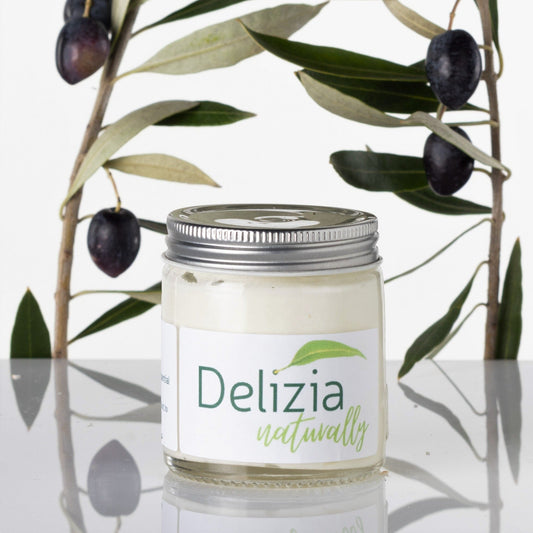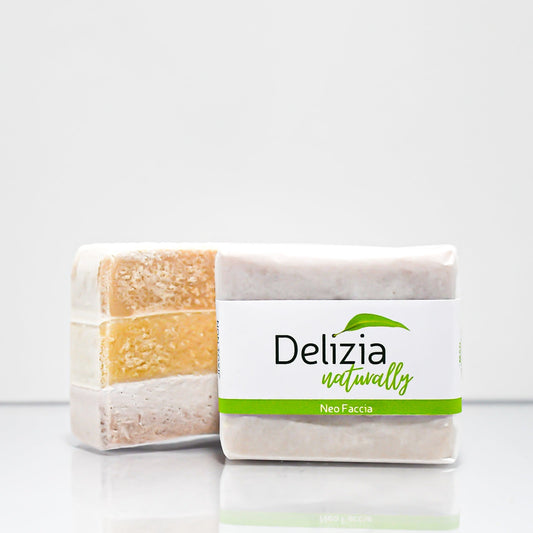Tallow - the wet or dry render method, what does it mean to render and purify tallow?

The final product - a tallow moisturiser ready to use
The use of Tallow has been gaining attention in the last few years or so. Many people are recognising and experiencing the benefits of this product for skincare and soap. Rich in vitamins and closely resembling human skin, tallow is full of soluble vitamins A, D, E, K, and B12. Tallow is rich in minerals and full of conjugated linoleic acid (CLA) which has powerful anti-inflammatory properties. This has also seen an increase in people making soap and skincare to keep up with interest and demand. This blog has been written in collaboration with two other tallow brands, one from Australia, Britt - A Mama's Apothecary (AMA) and the other from the USA, Ashley - Trinity Tallow.
Render is the term used to describe the melting of fat.
Tallow is the term used for rendered fat of ruminant animals - think beef, sheep etc. Tallow has been used for centuries in the manufacture of soap and skincare.
For the artisans of us out there who produce these beautiful products, there are a few ways by which tallow is prepared. There is some information on the internet about a so-called superior method of rendering tallow. Each method has its place, I would like to address this so-called superior method and discuss the experiment that was carried out to determine this. I will address four processes here in this blog and refer to beef tallow (while we at Delizia Naturally also use Sheep Tallow - which is slightly different, this blog will address beef tallow). The processes indicated below usually refer to multiple renders. That is, it is assumed the fat will be rendered more than once using the method stated.
Also, some people refer to the addition of water as 'purification'. By definition, to apply heat and to sieve or filter the tallow is to purify the fat, with or without water. For clarity, we do not ascribe to the definition that to purify only means to add water and or salt.

Beef fat before it is minced and rendered.
There are five products as a result of rendering fat and can be seen by the layers when a fresh batch of fat has been rendered with water. Interestingly these layers are not visible when the batch has not been rendered with water.
1. Fat
2. mince/meat
3. grizzle
4. white, soft, non fat solids; and
5. gelatin.
In some circles the addition of water added to the fat when rendering tallow has been demonised such that it is stated as 'bad' for the tallow. We believe this to be incorrect and scaremongering. Even if fat is dry rendered there is still a small amount of water content within the fat and can be seen after heating, I don't think it is news, but cows drink water and so some of this water is absorbed into their bodies.
Tallow is by its nature hydrophobic, this means that it repels water, making it an excellent choice for various applications, from candle-making, moisturisers and soap production. Wet rendering involves melting the fat and subjecting it to hot water, typically just below the boiling point. The heated water causes the fat to melt, separating it from impurities and tissue. As water and tallow do not mix, the hydrophobic nature of tallow becomes crucial in this process. The impurities, being water-soluble, remain in the aqueous phase, while the purified tallow floats on top - the oil/fat phase. This rendering process results in a cleaner, high-quality tallow, free from impurities, which can be used in a multitude of applications.

A finished bar of tallow soap - 100% beef tallow, no other oils added
Listed below are some of the common processes in preparing tallow:
A. Wet render: fat and water.
This process involves heating the fat over a double boiler/slow cooker - water is added to the fat to help the fat run through a sieve when filtering the meat, grizzle, gelatin and other non-fat solids.
Positives:
-
Effective at cleaning and separating the non-fat solids from the fat.
-
Able to remove impurities and water-soluble compounds more effectively, is often considered a safer and more reliable method in terms of tallow purity and quality.
-
The beef scent contains hydrophilic (water-attracting) compounds, which are more effectively removed by wet rendering because they readily dissolved in water. In contrast, dry rendering doesn’t provide the same opportunity to dissolve and remove these compounds.
-
Allows for better temperature control, with the use of hot water. This controlled heat can help volatilize and carry away some of the odour compounds in the steam, further reducing the beef scent. Beef fat has a melting temperature of around 40-50°C. It is not necessary to apply heat above 70°C.
Negatives:
-
Water may remain on the surface if not separated accurately from the fat.
-
Is a longer and staged process than wet rendering. Having to wait for the fat and water to separate before the next render.

Temperature of beef tallow 67°C is 153°F
B. Wet render: fat, water and salt.
This process involves heating the fat over a double boiler/slow cooker - water and salt are added to the fat to help the fat run through a sieve when filtering the meat, grizzle and other non-fat solids. The salt helps to clean and deodorise the fat.
Positives:
-
Positive points as above; and
-
Effective at cleaning, extra deodorising and separating the non-fat solids from the fat with the addition of salt.
Negatives:
-
If salt is used just before the tallow is used for skincare or soap, a small amount of the salt will remain in the product. I have experienced this firsthand when making a face moisturiser from the tallow - licking my lips and tasting salt. It is advisable to perform a last render without salt just before using the tallow. Suffice to say I no longer use salt.
-
Water may remain on the surface if not separated accurately from the fat.
-
Is a longer process than dry rendering. Having to wait for the fat and water to separate before the next render.

Upturned beef tallow - after first render.
The picture above shows upturned beef fat that has been wet rendered once. You can see the glycerin, the transparent light pink material (still containing meat solids), and the other non-fat solids under this. Note: None of these impurities are separated when only a dry render is done.
C. Wet render and dry render for last render.
This process involves the wet render method and then doing a dry render (not above 70°C) for the last or last couple of renders.
Tip: Before pouring the fat into a container to have it set, let it rest for 10-15mins and watch to see if there is any water content that will settle at the bottom of the bowl/pot. Then pour this smaller amount into another container. After the fat has cooled, and when upturning the fat, you may see a little water, use a clean paper towel to absorb this moisture. Repeat this process until no water remains.
Note: If making soap from the tallow it is not as important to make sure the tallow is water free, like it is for moisturisers. The reason is because any left over water will be consumed by the lye (sodium hydroxide) in the process of saponification.
D. Dry render: fat only.
This process involves heating the fat over a double boiler/slow cooker - NO water or salt is added, the fat is then passed through a cheese cloth or muslin into a container. Often this process is only done once.
Positives:
-
Effective at ensuring minimal water remains.
-
Is a faster process than wet rendering.
-
May be used for soap production if essential oils are used. The essential oils may balance out the beef/animal smell.
Negatives:
-
Some of the non-fat elements (specifically the white, soft, non-fat solids) will remain in this tallow.
-
Not effective at separating, cleaning and deodorising the fat: Dry rendering does not offer the same effective separation of impurities and water-soluble compounds as wet rendering. The lack of water in the process means that these impurities can be more likely to remain within the tallow, increasing the risk of contamination.
-
It may smell 'beefy'/like the animal. Dry rendering relies on heat alone, which might not effectively separate these impurities, leading to a tallow with a stronger beef scent. Similarly, there is a risk of the batch overheating which can intensify the beefy aroma. Wet rendering, on the other hand, provides a more gentle and controlled process, reducing the likelihood of overheating and the subsequent increase in odour.
-
Can carry a slightly higher risk of producing tallow that may be contaminated.
-
It relies on direct heat to melt the fat, the high temperatures involved in this process can lead to the formation of more undesirable compounds and potential degradation of the tallow’s quality. Overheating can also amplify any existing impurities, increasing the risk of contamination.
-
Can result in uneven heating, which may lead to parts of the suet or tallow being exposed to higher temperatures for longer periods. This can cause localized issues with quality and potential contamination. While dry rendering is still a viable method for producing tallow, it requires more careful monitoring and control of the process to minimize the risk of producing contaminated or low-quality tallow.
The best way to remove the smell
The solution to removing the 'animal' smell is twofold. It is a combination of low heat AND wet render. Try and keep the melting tallow and water below 70°C (158°F). Tallow has a melting point of between 40-50°C (104-122°F) so melting it well about 70°C is not necessary and may even damage the tallow properties.
Discussion continues amongst tallow manufacturers about the best way to render tallow. An experiment was carried out stating that the dry render method is superior to other methods. It is well known that water and oil (fat) do not mix, they are polar opposites. This means that the fat does not actually absorb the water but it sits on the surface. If we were to carry about a lab experiment aiming to compare the methods mentioned above, we would be careful to ensure the following strict cosmetic (not food) laboratory conditions:
-
The fat would be from the same cow. We would not compare samples from different beasts (different cows) as this would already present skewed results. Every cow is different, every herd of cattle is different, every patch of grass they graze on is different, and so would be the fat from different beasts. It would not be at all accurate to compare fat from different animals. Is the cow grass fed verses grain fed? This would display varying results if the comparison at the outset is not from exactly the same animal."The composition of fat tissue in cattle is affected by many factors including breed, sex, diet, weight, age, fatness and environmental effects such as climate and season."1
-
IF we acquired fat from the same beast, it would have to be the same type of fat, is it beef suet (from around the joint and kidneys) or is it whole body fat? That is, the fat would need to be taken from exactly the same spot of that animal and compared evenly across samples.
-
The same manufacturer would need to make all the samples. It is obvious that purchasing a product from one manufacturer and comparing it with another would not provide an accurate comparative test. Since methods are different and would need to be supervised under strict laboratory conditions. The method of each render would need to be quality controlled exactly. The same sterile equipment used and exactly the same temperature applied to each sample. If one sample was heated higher than another then this would of course affect the result. If the heat is not consistently applied to all samples then the results would not yield an accurate comparison. (Was the heat applied below 122° F/ 50° Celsius, heat above this temperature may affect the quality of the tallow, 200-220°F/ 104°C is NOT a gentle heat.) If the samples are sourced from different animals, and with different temperatures applied using different methods this would not at all yield an accurate comparative data set.
-
How long is the fat heated?, a consistency of the heat applied would need to be controlled carefully, this would need to be timed in a controlled environment for all of the samples. If the samples are sourced from different manufactures there is no way of controlling this. The fatty acid profile may be affected if too much heat is applied and if the duration is too long.
-
Test each element BEFORE any heat or addition of water or salt occurs. That is, test the water and salt independently for impurities or added metals/chemicals AND test the fat independently.
-
Measure and record the volume of water in comparison to the volume of fat being rendered, when conducting a wet render. Make this consistent across samples.
-
Have the test done by a completely independent party - with no business ties to the manufacturer conducting the experiment. This is to ensure the results are completely honest and independent.
In summary, this blog is not to pit one method against another, it is to merely explain the differences in methods. We aimed to address information that is claiming to be the bastion of truth and integrity yet the experiments done thus far may not hold up to this standard. Each artisan will choose that which is suitable for them and their products. It would be inaccurate to state one method is superior especially when no independent, clear, and strict experimental testing has occurred. Accuracy and care must be taken in making a comparison between the methods. And thus far, to my knowledge, it has not been carried out.
Note: There has been some comparison to the extraction of shea butter and the rendering of tallow. This is completely inaccurate. It is impossible to separate the shea nut from the shaft without water. Water is always used in preparing shea butter, whether it is refined or unrefined. See this video Shea Butter process. Secondly, the comparison between 'refined' Shea Butter and tallow is incorrect. I know of no-one who adds chemicals to reduce the so called animal scent of tallow. Water is not by this definition, a chemical.
All of this said, the most natural, unadulterated way to use tallow is actually just a piece of fat - taken and smeared and used directly on the skin! And I don't know any manufacturer that has the guts to say this is how they prepare their tallow, because they actually don't.
In fact my mother retells the story of seeing farmers in her village in Italy who would get pure, raw lard and smear it on their hands and the leather strap supporting the yoke of the oxen to prevent cracking. We have updated our processes substantially since then.
Other tallow artisans who are contributors to this post include:
If you have comments or questions please ask them below. Comments will be moderated.
1. chrome-extension://efaidnbmnnnibpcajpcglclefindmkaj/https://meatupdate.csiro.au/data/MEAT_TECHNOLOGY_UPDATE_99-7.pdf
#tallow #tallowtalk #skincaresecrets #tallowskincare #labresults #nutrientrich #tallowstesting #tallowmakers #tallowresearch #tallowrendering #truthintallow #experiment #grassfedtallow #tallowsoap
